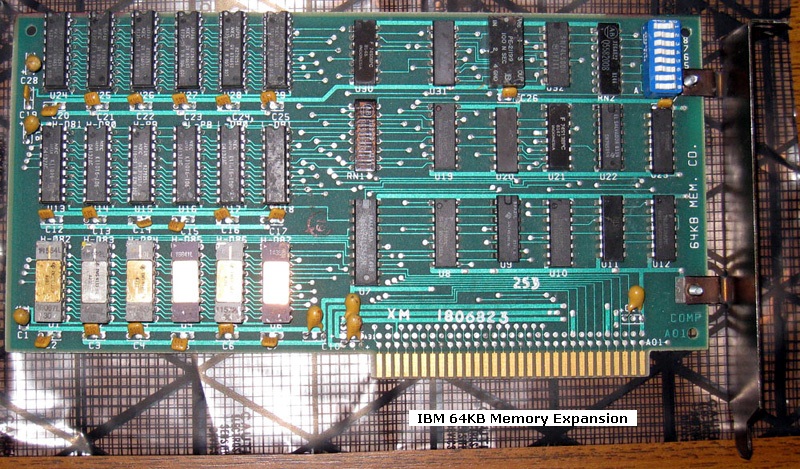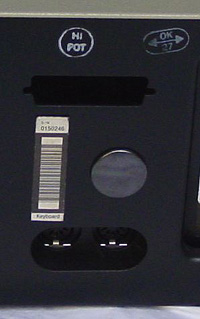
As shown on the left, the case of a very early 5150 is slightly different to above.
(photo source: Lorne at the VCF)
(photo source: Lorne at the VCF)
| Home |
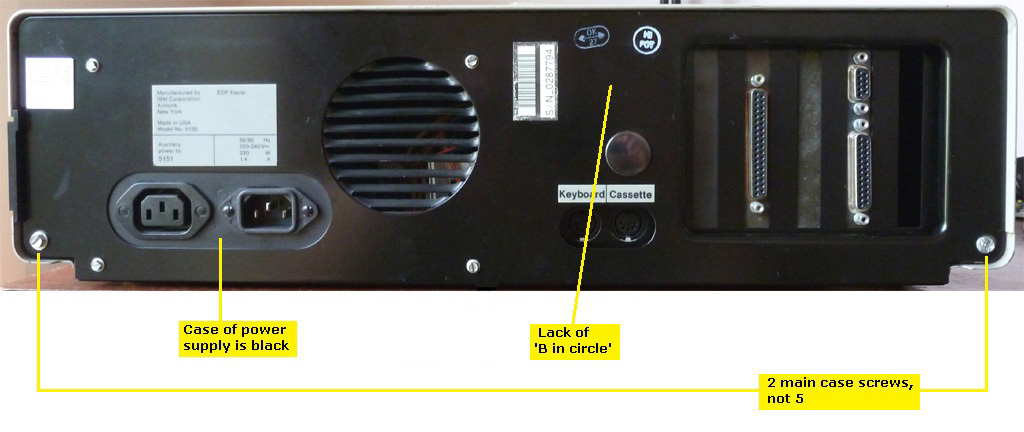
 |
As shown on the left, the case of a very early 5150 is slightly different to above. (photo source: Lorne at the VCF) |
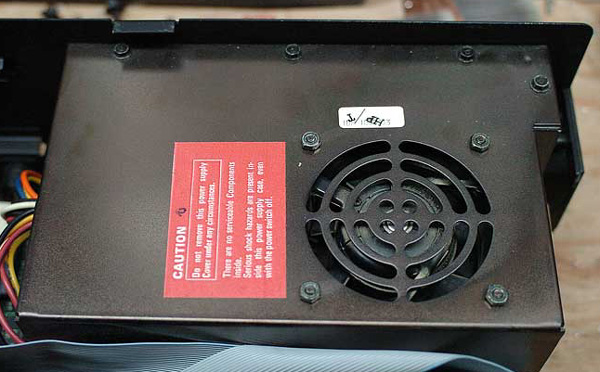 |
|
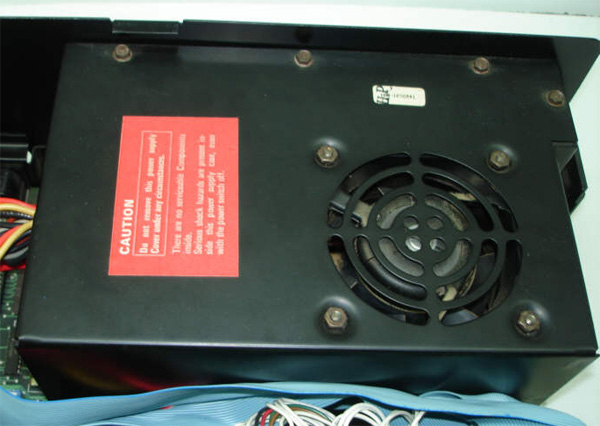 |
Compared to the above power supply: 1. The fan nuts are now recessed; 2. Different finish. (photo source: Framer at the VCF) |
Yellow sticker, and fan nuts moved to inside of case. ( Note: 220 VAC ) |
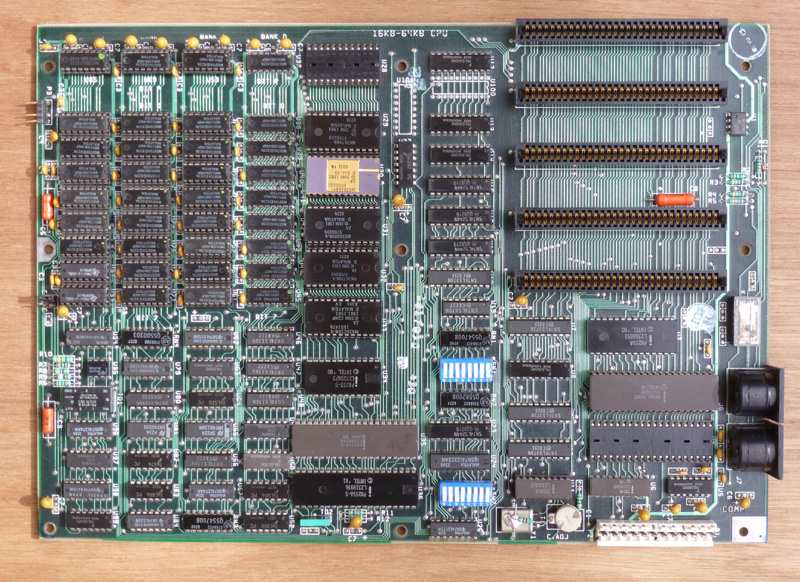 |
Click on photo for larger view |
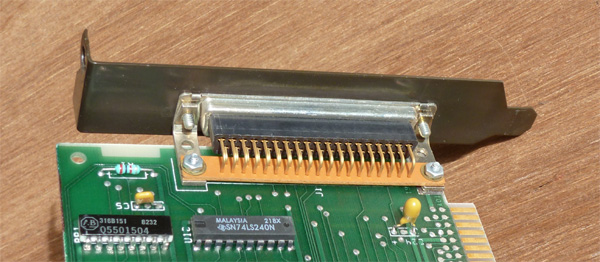
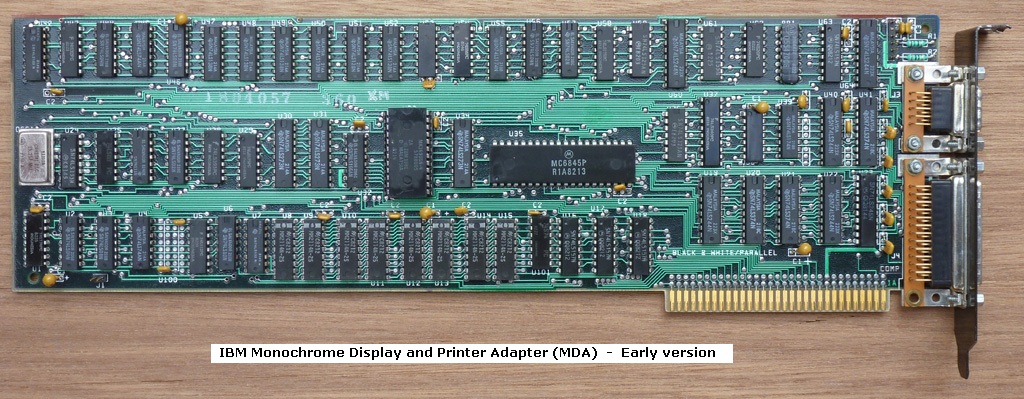 |
Click on photo for larger view |
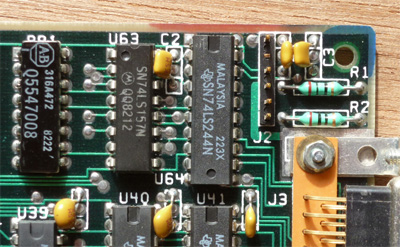
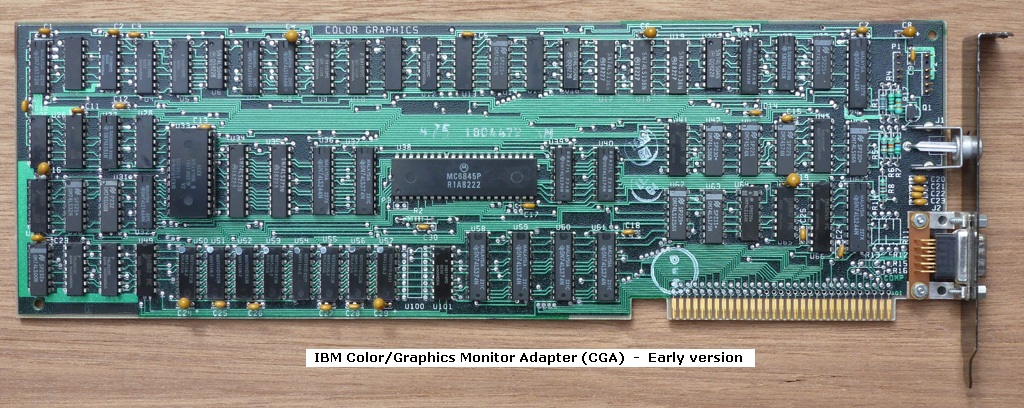 |
Click on photo for larger view |
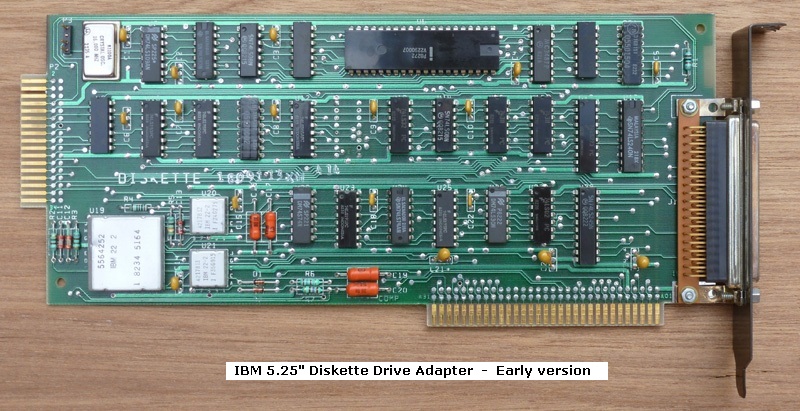 |
Click on photo for larger view |
